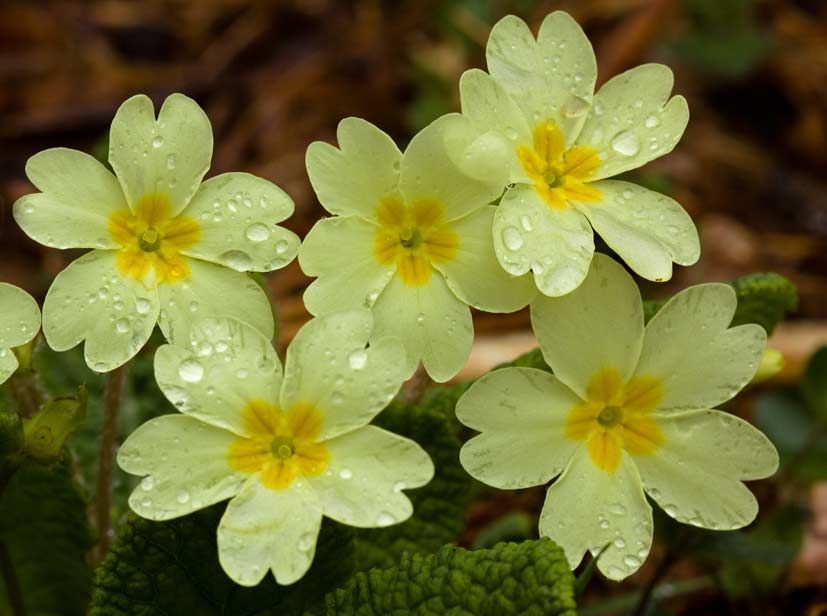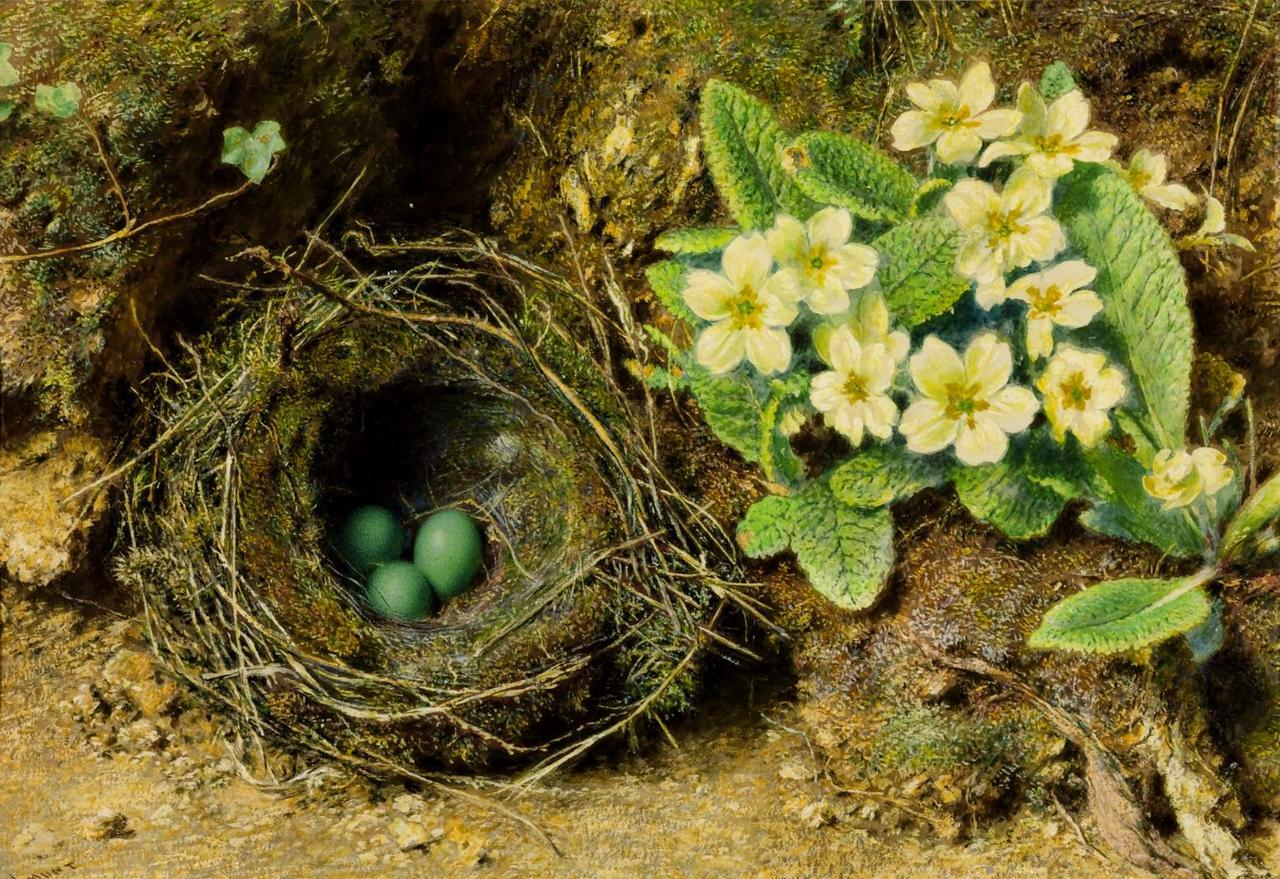‘One more Unfortunate
Weary of breath
Rashly importunate,
Gone to her death!
Take her up tenderly,
Lift her with care;
Fashion’d so slenderly,
Young, and so fair!‘ (The Bridge of Sighs, by Thomas Hood, 1844)
 Found Drowned, George Frederic Watts, 1850
Found Drowned, George Frederic Watts, 1850
Painting Found Drowned was painted in c. 1850 by the famous Victorian painter George Frederic Watts, who is usually associated with the Symbolist movement. In this case however, he employed his talents in social realism genre. The painting depicts the dead body of a woman washed up beneath the arch of Waterloo Bridge, her body still immersed in the cold, dirty water of the River Thames. She is presumed to have drowned after throwing herself in the river in despair, trying to get away from the stigma of ‘fallen woman’: a term used in Victorian era to describe women who had lost their innocence. The painting was inspired by Thomas Hood’s poem ‘The Bridge of Sighs‘, published in 1844. The poem tells a story of an anonymous young woman, desperate and abandoned by her lover, pregnant and thrown out of her home, who committed suicide by jumping off a bridge.
In the foreground we see her dead body, her torso and arms in the shape of a cross. The simplicity of her orange-coloured gown suggests that she belonged to the lower class, perhaps she was a servant. Some parts of the poem directly describe her appearance: ‘Look at her garments/Clingling like cerements; /Whilsts the wave constantly/drips from her clothing…‘ and ‘Loop up her tresses/Escaped from the comb,/Her fair auburn tresses…‘ and ‘And her eyes, close them,/Staring so blindly.‘ As a contrast, the background is painted in dark shades of blue and grey, portraying the gloomy London night sky and industrial cityscape. City sleeps, and so do the people, in their quiet and cozy homes, sitting by the fireplace; chatting or reading. Questions arise: Will she be missed? Will anyone even notice that she’s gone? What will they say when they find her body in the morning? Will anyone’s heart be filled with regret? And yet there’s a star in the sky, could there be hope? Hardly, I’d say.
 Found, Dante Gabriel Rossetti, 1859
Found, Dante Gabriel Rossetti, 1859
Subject of ‘fallen women’ was particularly popular in Victorian art and literature, and, I’d have to say it’s a rather compelling subject to write about. As you will see later, many artists such as John Everett Millais, Augustus Egg, Dante Gabriel Rossetti and Richard Redgrave decided to portray the sad and hopeless circumstances that tormented those fallen women after their innocence was lost. As expected, moral authority was almost always limited to women, nobody questioned the chastity of men. This is just one of many hypocrisies of Victorian society.
“Fallen” was therefore an umbrella term that was applied to a variety of women in a variety of settings: she may have been a woman who had had sex once or habitually outside the confines of marriage; a woman of a lower socio-economic class; a woman who had been raped or seduced by a male aggressor; a woman with a shady reputation; or a prostitute. Furthermore, prostitution was defined in a range of ways and the “reality was that hard economic times meant that for many women, prostitution was the only way to make ends meet. Many … were only transient fallen women, moving in and out of the profession [of prostitution] as family finances dictated.’(*)
Rossetti’s painting ‘Found’ (unfinished) was inspired by fallen women, and he also wrote a poem on that subject:
‘There is a budding morrow in midnight:’ –
So sang our Keats, our English nightingale.
And here, as lamps across the bridge turn pale
In London’s smokeless resurrection-light,
Dark breaks to dawn. But o’er the deadly blight
Of love deflowered and sorrow of none avail,
Which makes this man gasp and this woman quail,
Can day from darkness ever again take flight?
Ah! gave not these two hearts their mutual pledge,
Under one mantle sheltered ‘neath the hedge
In gloaming courtship? And, O God! today
He only knows he holds her; – but what part
Can life now take? She cries in her locked heart,-
‘Leave me – I do not know you – go away!’
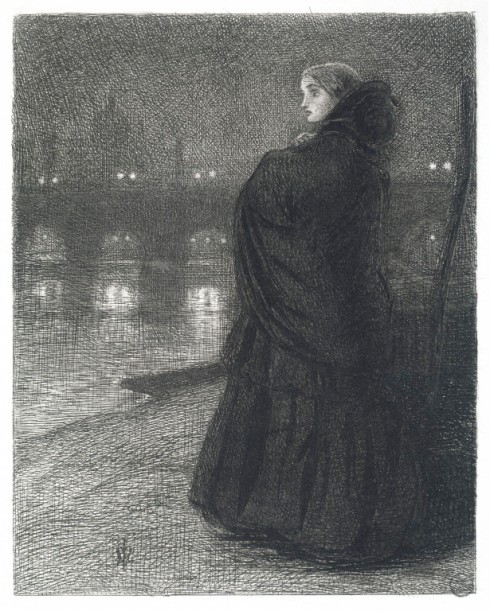 The Bridge of Sighs, Sir John Everett Millais, 1858
The Bridge of Sighs, Sir John Everett Millais, 1858
Millais’ etching truly captured the alienation of the individual in the big city, a sense of hopelessness, while the question of ‘what shall I do next?’ lingers in her mind. Even though its colourless, it holds a certain warmth and vividness; city lights and the bridge seem so lively, the river glitters. Woman’s weary body is tightly wrapped in a shawl, her eyes tired, her face gloomy. A feeling of destitute pervades the atmosphere. She reminds me of Lou Reed’s Femme Fatale: ‘Where shall she go, what shall she do…’ There is no turning back, and yet the future brings nothing but uncertainty. A chance of finding a decent job was unlikely. Fantine, a character from Victor Hugo’s novel Les Miserables, is a good example of the poor treatment of fallen women. She was left with a small child, Cosette, after her lover abandoned her. Initially she worked in the factory, but lost her job after everyone found out she is an unwed mother.
For me, Millais’ visual interpretation of Hood’s poem really captured these verses:
‘Where the lamps quiver
So far in the river,
With many a light
From window and casement,
From garret to basement,
She stood with amazement,
Houseless by night.
The bleak wind of March
Made her tremble and shiver
But not the dark arch,
Or the black flowing river:
Mad from life’s history,
Glad to death’s mystery
Swift to be hurl’d–
Any where, any where
Out of the world!‘
 George Elgar Hicks, On the Seashore, 1879
George Elgar Hicks, On the Seashore, 1879
The lady above is undoubtedly facing completely different problems and dilemmas than the unfortunate woman in Millais’ etching or Hood’s poem. Her gown is black, but opulent, her hair lush and restless, her gaze wistful. All together she seems groomed and proper, on her face life has not yet left any traces of sadness and disappointment, everything awaits her, unlike Millais’ heroine who was forced to encounter the ‘real world’.
Augustus Egg’s triptych ‘Past and Present’, 1858, shows the downfall of a bourgeois family, the effects of adultery not only for the ‘guilty’ woman but for the children as well, and the whole reputation of the family. Third painting, Past and Present, No. 3, Despair’, is the most interesting one because it shows the same motifs as Found Drowned by George Frederic Watts. Woman, who had played he cards wrongly, now sits under the bridge, and, helpless and alone, oh, completely alone, gazes at the moon, as if expecting salvation from the stars. One wrong step gambled away her future. Was it worth it?, she asks herself, but the night doesn’t respond. All is silent, and Thames is asleep. The scene again leads me to Hood’s poem:
‘Whilst wonderment guesses
Where was her home?
Who was her father?
Who was her mother?
Had she a sister?
Had she a brother?
Or was there a dearer one
Still, and a nearer one
Yet, than all other?
Alas! for the rarity
Of Christian charity
Under the sun!
Oh! it was pitiful!
Near a whole city full,
Home she had none.‘
 Augustus Leopold Egg, ‘Past and Present, No. 1, Misfortune’, 1858
Augustus Leopold Egg, ‘Past and Present, No. 1, Misfortune’, 1858
 Augustus Leopold Egg, ‘Past and Present, No. 2, Prayer’, 1858
Augustus Leopold Egg, ‘Past and Present, No. 2, Prayer’, 1858
 Augustus Leopold Egg, ‘Past and Present, No. 3, Despair’, 1858
Augustus Leopold Egg, ‘Past and Present, No. 3, Despair’, 1858
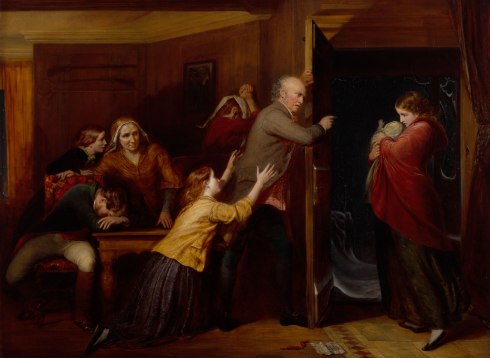 Richard Redgrave – The Outcast, 1851
Richard Redgrave – The Outcast, 1851
Tags: 1844, 1850, 1859, 1879., Augustus Egg, Dante Gabriel Rossetti, fallen women, found drowned, Georg Elgar Hicks, George Frederick Watts, John Everett Millais, les Miserables, London, On the Seashore, Poetry, River Thames, Symbolism, The Bridge of Sighs, Thomas Hood, Victor Hugo, victorian art, Victorian era, victorian poetry
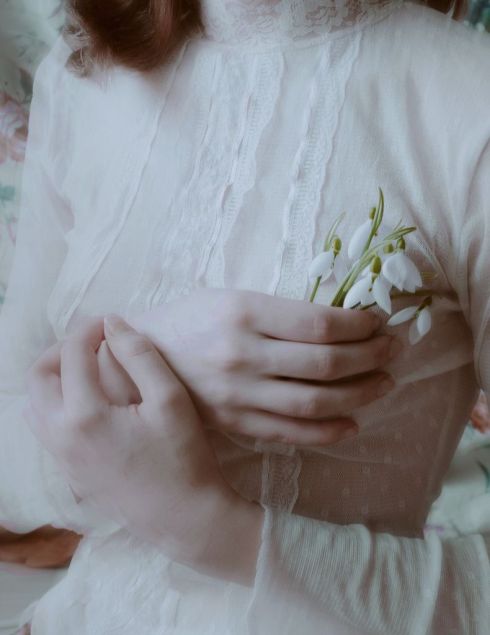 Photo by Michelle De Rose, Waiting.
Photo by Michelle De Rose, Waiting.

